Lifestyle
Budapest: Where timeless legends come alive along magical Danube
The moment you set foot in Budapest, the gates to a 2,000-year-old legacy begin to open. It feels as if you’ve entered a land where time flows within a fairytale. This city, embracing both banks of the Danube, has been reborn from its humble Celtic and Roman roots. With its green hills, golden hues, and art that seeps into every corner, Budapest feels like a magical place pulled from the pages of a legend.
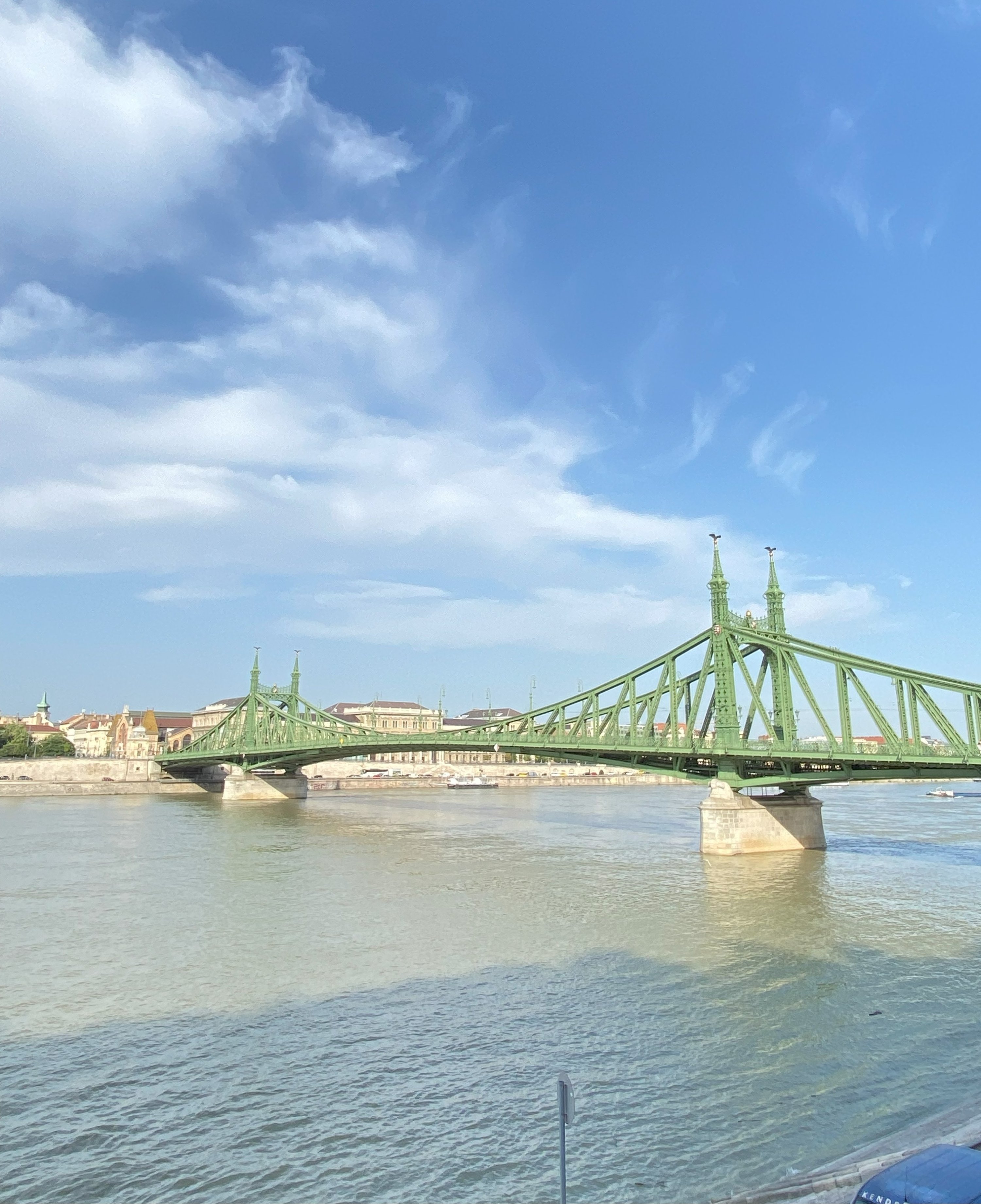
Enchanted dance of Buda, Pest
Set on opposite banks of the Danube, the city itself becomes a storybook stage: Buda, to the west, is peaceful with its gentle hills, cobbled streets and tranquil parks. Pest, on the eastern flatlands, pulses like a vibrant diary with wide boulevards reminiscent of Vienna, lively avenues and a beating modern heart. The bridges that connect the two aren’t merely pathways they feel like enchanted doors opening through time.
Buda’s silent whispers
As you step into Buda, you’re drawn into layers of history. The Presidential Palace, standing in the shadow of Castle Hill, glimmers like a palace from a fairytale. Matthias Church, a witness to time since the 11th century, looms with elegance. Once converted into a mosque during the Ottoman period and later restored, the church enchants with its stone carvings, colorful tiled roofs and panoramic views from its dome. The Fisherman’s Bastion offers the most breathtaking lookout in the city its fairytale turrets and white pillars lay all of Budapest at your fingertips. At sunset, when the golden light paints the Danube, the scene becomes simply unforgettable.
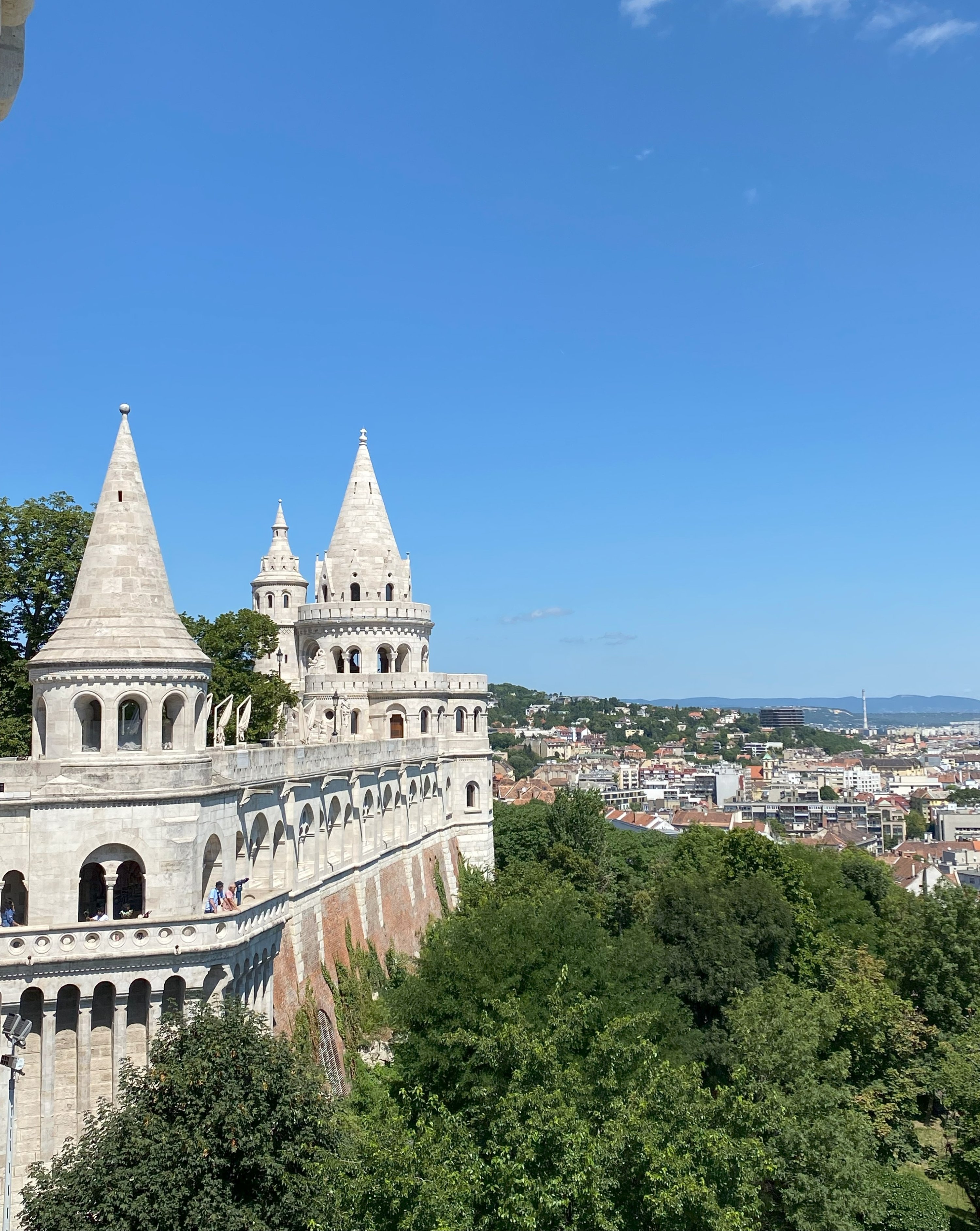
Pest’s vibrant celebration
Crossing to Pest, you’re swept up in its rhythm. Your first stop: the Great Market Hall (Nagycsarnok), standing tall since 1897 with its vast vaulted ceiling that recalls a grand ship’s deck. The scent of fried dough from the upstairs langos stalls is as tempting as the sweet jam-filled bukta. Inside, colorful spices, handcrafted souvenirs, and fresh produce create a dazzling visual feast. Bite into a lángos on the street: crispy outside, soft inside; it’s pure culinary joy.
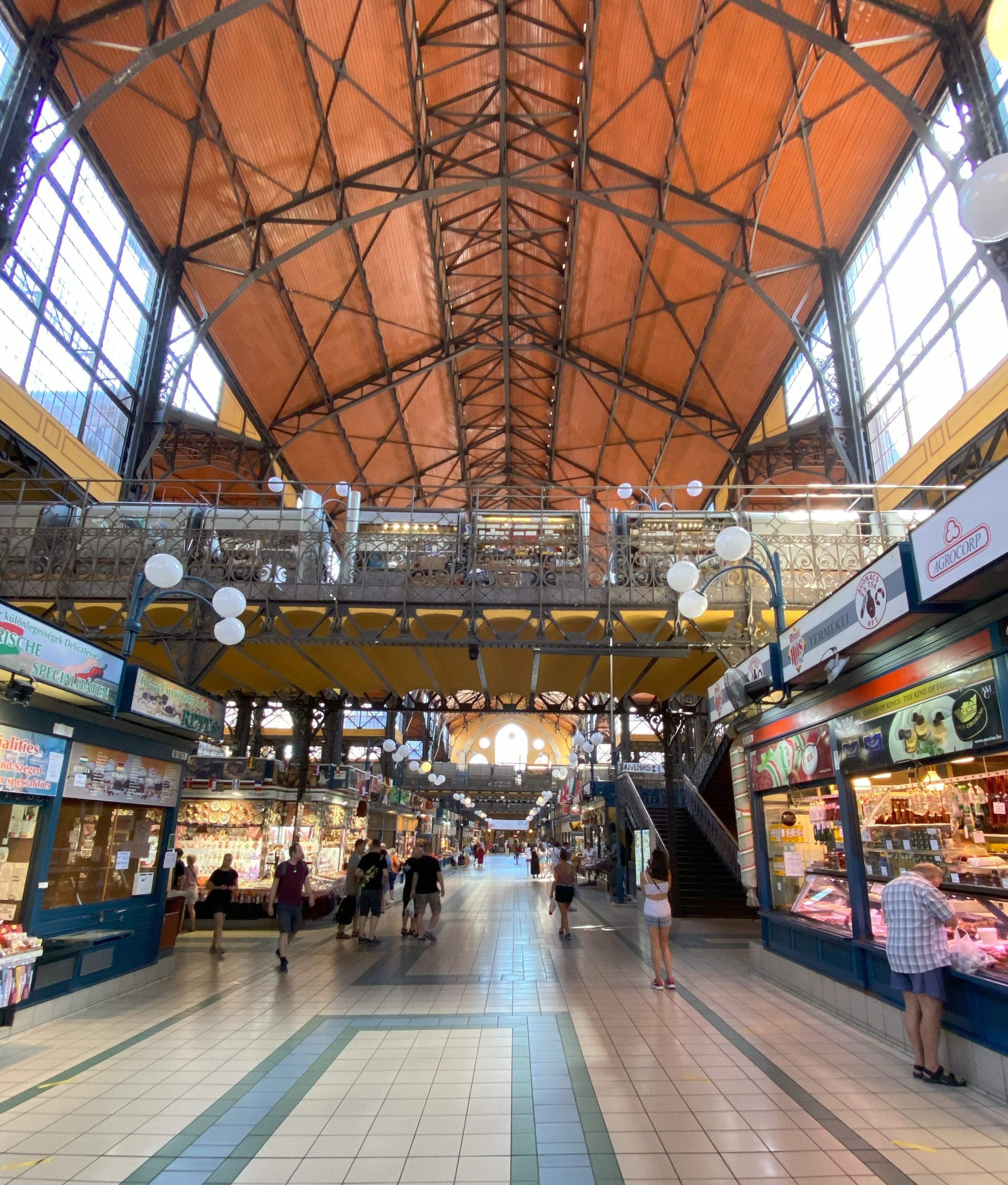
Another highlight along the Danube is the Gellert Thermal Bath. Open since 1918, it’s a masterpiece of Art Nouveau, with stained glass shutters and elegant mosaics. In its warm, mineral-rich waters, you can drift under the steam and waterfalls, rejuvenating both body and spirit. The steam rooms, saunas, and thermal pools offer a perfect escape from the city’s bustle.
Sacred, cultural riches
St. Stephen’s Basilica rises above the city like a resounding bell. Built in honor of Hungary’s first king, its graceful columns and intricate stonework captivate visitors. Climb the 364 steps (or take the elevator) to the dome for a sweeping 360-degree view like gazing upon a giant painting sprung to life. Beneath its heavenly domes, the hush within offers a serene glimpse into the past.

The Hungarian State Opera House is a jewel of Neo Renaissance architecture. Renovated in 2022, this grand building with its sweeping staircase and three-tiered auditorium resembles a royal palace. Ornate wall paintings and gilded ceilings invite you to revel in art, history, and splendor. If time allows, an afternoon guided tour offers a backstage pass into this cultural gem it’s like walking through a theater of secrets.
World of wisdom, wonder
Step into the Ervin Szabo Library and you’ll feel like a sorcerer flipping through timeworn tomes beneath golden chandeliers. Once the Wenck Heim Palace, the building has served as a library since the early 20th century. The high-ceilinged reading rooms, green-shaded lamps and faint scent of old books create an atmosphere of quiet reverence. For just about 1,900 HUF, this timeless sanctuary opens its doors to you.
Habsburg, Ottoman echoes
Budapest has borne witness to the power plays of empires the grandeur of Habsburg palaces and the elegance of Ottoman baths etched into its streets. Each of the city’s 23 districts tells a unique tale through its architecture, atmosphere and inhabitants. Walk down cobblestone alleys and you might feel like a traveler resting in the shadow of an Ottoman madrasa; turn a corner and you’re met with echoes of Habsburg nobility, playing flutes in baroque courtyards.
Practical tips for transportation
From Istanbul, it’s just a one hour and 50 minute flight to Budapest with Turkish Airlines, AJET and Pegasus Airlines. The trip from the airport to the city center takes 30–45 minutes depending on traffic. The 100E bus gets you downtown for about 5 euros ($5.77), while a taxi will cost around 35 euros. If you’re on a budget, take the bus; for a more comfortable ride, the taxi offers a direct route to your hotel’s doorstep.
Taste of Hungarian cuisine
Hungarian dishes are the characters in this travel tale. Start your morning with warm lekvaros bukta, a jam-filled bun that melts in your mouth like a sweet dream. At midday, try Paloc soup a refreshing mix of yogurt, potatoes, beans and herbs that tells a summery, colorful story. For dinner, no table is complete without goulash: tender beef stew simmered with paprika and root vegetables, representing the very soul of Hungarian cuisine. Each spoonful is a bite of history.
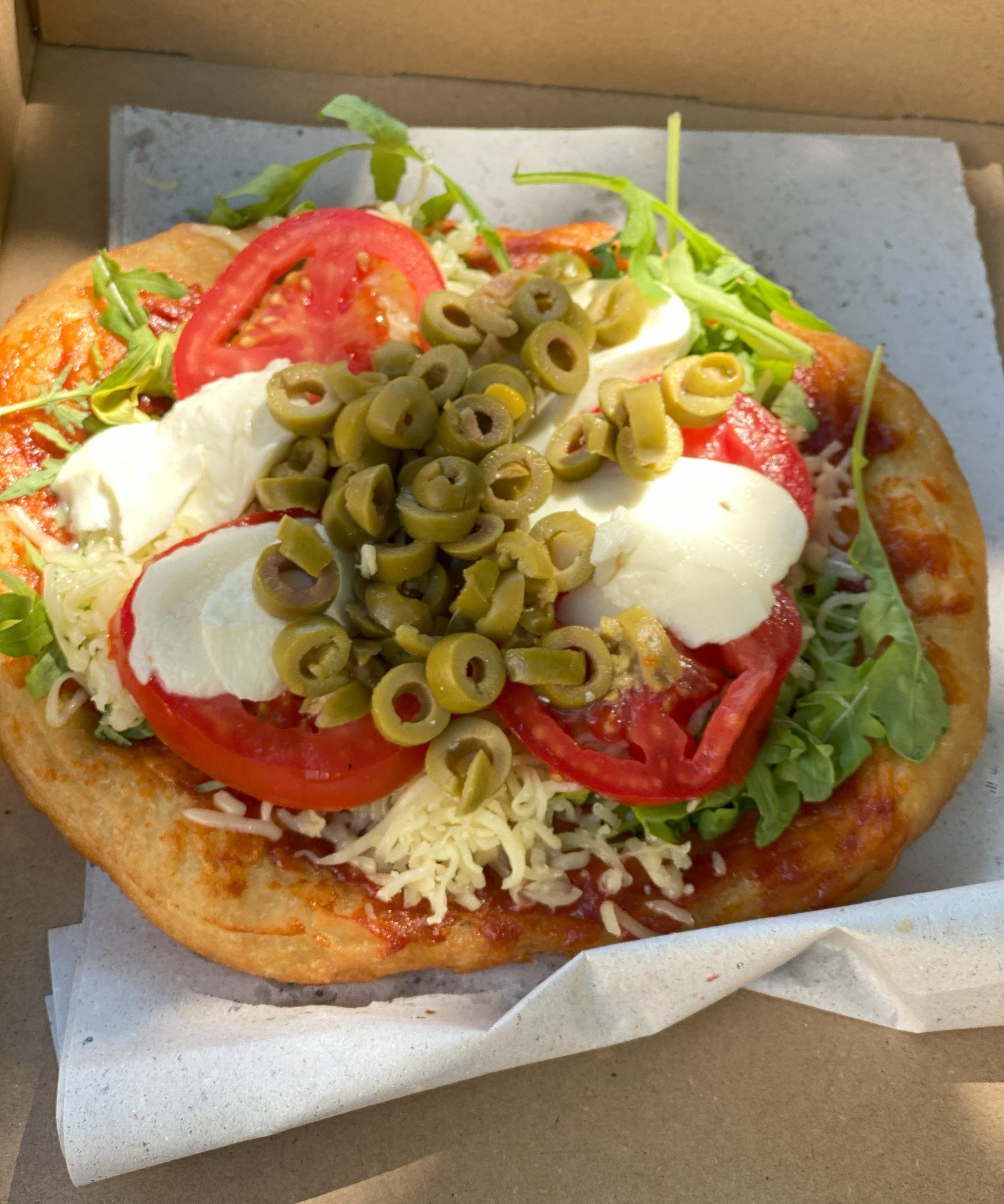
Madal Coffee & Co
With three locations across the city, Madal Coffee has been a local favorite since 2013. More than just a cafe, it stands out with its commitment to specialty coffee, a selection of vegan treats and a trendy vegan pasta menu. A perfect stop for those seeking both great flavor and mindful eating.
My Little Melbourne
Located in the buzzing Madách district, this cozy gem has been serving top-tier coffee since 2012. Though the space is small, it’s constantly full which testaments to its cult status among locals. Famous for its cappuccino, flat white, and tangy lemon cake, it’s a must-visit for true coffee lovers.
Espresso Embassy
Just steps away from St. Stephen’s Basilica, Espresso Embassy is a hub for the city’s coffee connoisseurs. Revered for its dedication to coffee craftsmanship, this spot is more than a cafe it’s a community gathering place. You can also purchase specialty beans to take the experience home with you.

Kollazs Brasserie
Set along the banks of the Danube, this stylish brasserie located in the Four Seasons Hotel is a favourite among both locals and visitors. Its menu highlights local ingredients and traditional dishes with a modern touch. Don’t leave without trying the schnitzel arguably one of the best in town.

Cafe Gerbeaud – Vörösmarty square
Dating back to the 1800s, Gerbeaud is a Budapest icon known for its decadent pastries and timeless charm. Situated in one of the city’s most beautiful squares, this historic café is often hailed as a must visit. Be sure to try traditional Hungarian cakes like Dobos, Esterházy, and Sacher tortes each a sweet slice of history.
Stand Restaurant
One of Budapest’s Michelin-starred gems, Stand is a serene haven of culinary sophistication nestled in a vibrant, youthful part of the city. Run by celebrated Hungarian chefs Szabina Szullo and Tamas Szell, the restaurant showcases Hungarian cuisine with a focus on seasonal, local ingredients.
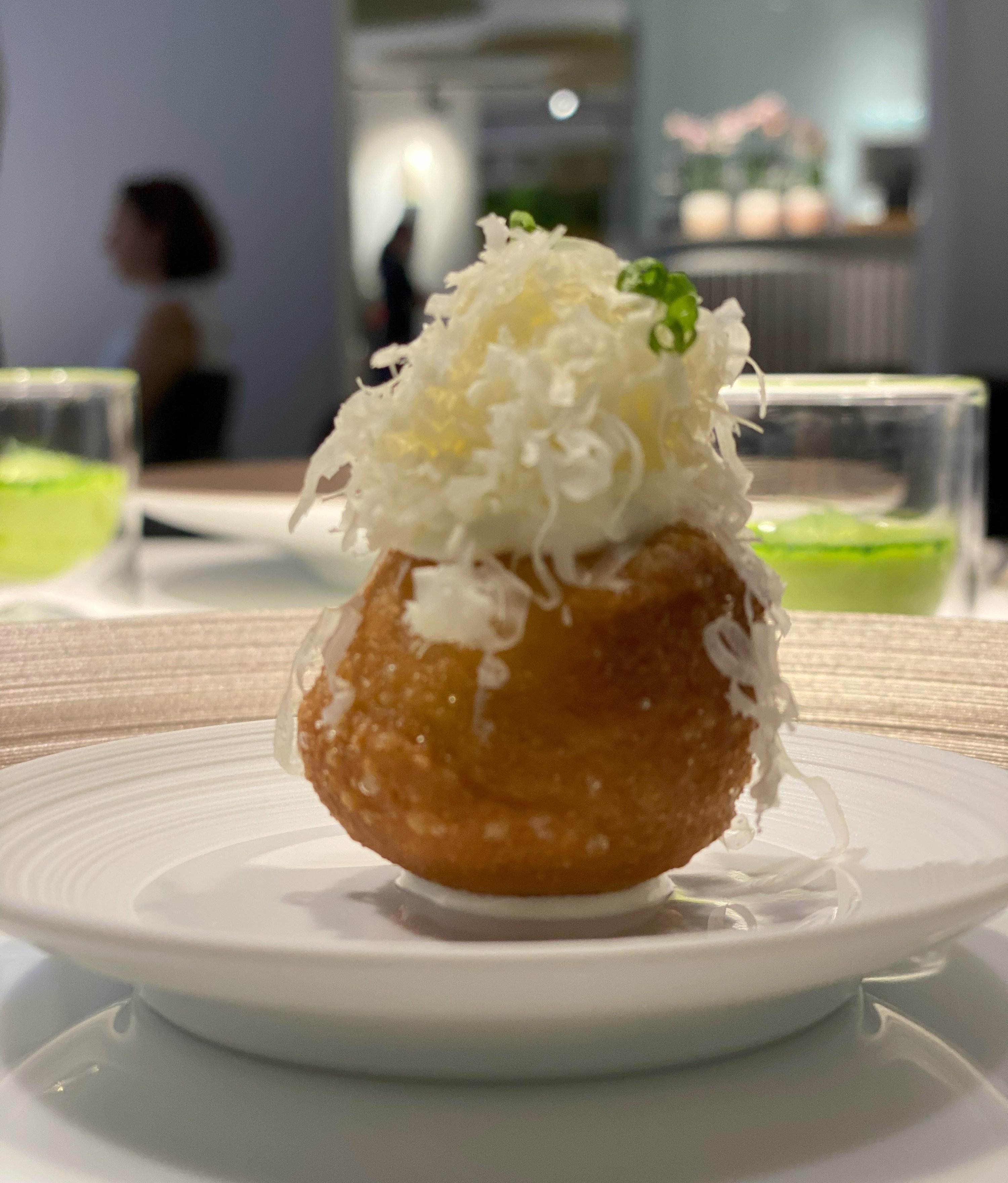
Choose between a six-course or eight-course tasting menu, with seatings typically at 6 p.m. or 7 p.m., as the full experience lasts around three to four hours and finishes close to 11 p.m. Every dish is a story served on elegant, traditional dishware with impeccable service.
Spago
Located within what’s arguably Budapest’s trendiest hotel, Spago by Wolfgang Puck is the city’s other Michelin-starred standout. Offering both lunch and dinner service, it’s a celebration of international and Hungarian flavors with signature dishes like the smoked salmon and caviar pizza, New York-style steak, lamb chops, cheese-filled ravioli and exquisite desserts. The ambiance enhances every bite, making it not just a meal but an event. Reservations are essential, especially for dinner, as this is where celebrities, politicians, and cultural figures queue up for a table.
Budapest is a city where every corner breathes with the spirit of a living fairytale. Whether you lose yourself in bustling streets or find serenity in Gellert’s steam, every moment is a magical encounter with history. As the sun dips behind the hills and lights flicker along the Danube, you hear a soft echo in your heart: “I, too, was here.” And know this each step you take in Budapest becomes another line in an unforgettable story.
Lifestyle
Gastronomy, art in Türkiye’s Bodrum: Where to go this summer?
Today, culinary excellence is intertwined with brand storytelling, sustainability, visual aesthetics and even future expansion strategies. Guests expect much more. They want their dinner to be part of a larger narrative. A philosophy. An experience. And Bodrum’s leading restaurants are stepping up, bringing high art, flavor and standards to the table.
This year, Bodrum continues to impress the Michelin Guide with a handful of star-studded and star-worthy destinations. These aren’t just meals, they’re performances. A name that needs no introduction, Maçakızı retains its Michelin star with its Mediterranean-rooted, artistically executed menu by chef Aret Sahakyan. Each dish is a quiet ode to Turkish culinary heritage, refined, reinterpreted and worthy of applause. Chef Serhat Doğramacı isn’t just making food, he’s building a movement. His commitment to sustainability earned him the Green Star and the 2025 Michelin Young Chef Award. Don’t miss Ferhunde, their new venture next door. It’s a meze wonderland already whispering Michelin’s guide.
Lucca by the Sea: Delicious and fun? Lucca brings both to the table literally. It’s where flavor and festivity dance until the early hours and where a dinner plan easily turns into a night out. Mark your calendars for Aug. 2, Lucca Beach in Bodrum is the place to be as Monkey Project takes over for a night of unforgettable energy. Get ready to lose yourself in the magnetic beats of Dixon’s flawless DJ set and explore the captivating, boundary-pushing soundscapes of Jimi Jules. This is more than just a party; it’s a sonic journey under the Bodrum stars.
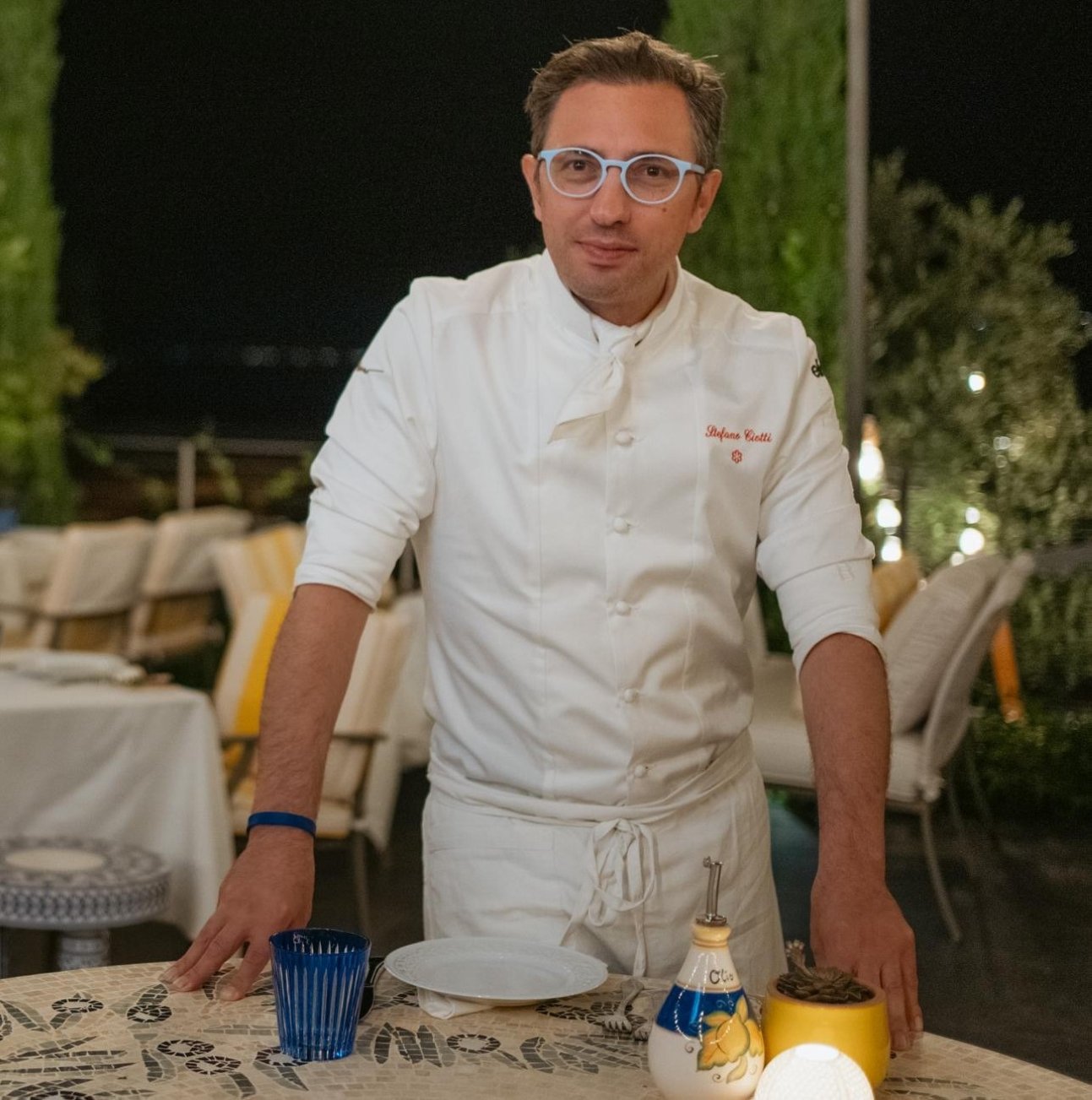
Gigi Rigolatto at Bodrum
This summer, Gigi Rigolatto takes over the Aegean with a luxurious pop-up at Mandarin Oriental, Bodrum. Michelin isn’t the only thing heating up this summer. International concepts are flocking to Bodrum and they’re doing it with style. Brought to life by RIKAS Hospitality Group and Paris Society, Gigi Rigolatto is a global icon of indulgence, from Paris to Dubai and now, finally, Bodrum. Its shimmering pop-up feels like a Saint-Tropez dream dipped in Aegean charm. It’s not just a restaurant. It’s a celebration of “La Vita Alla Grande.”
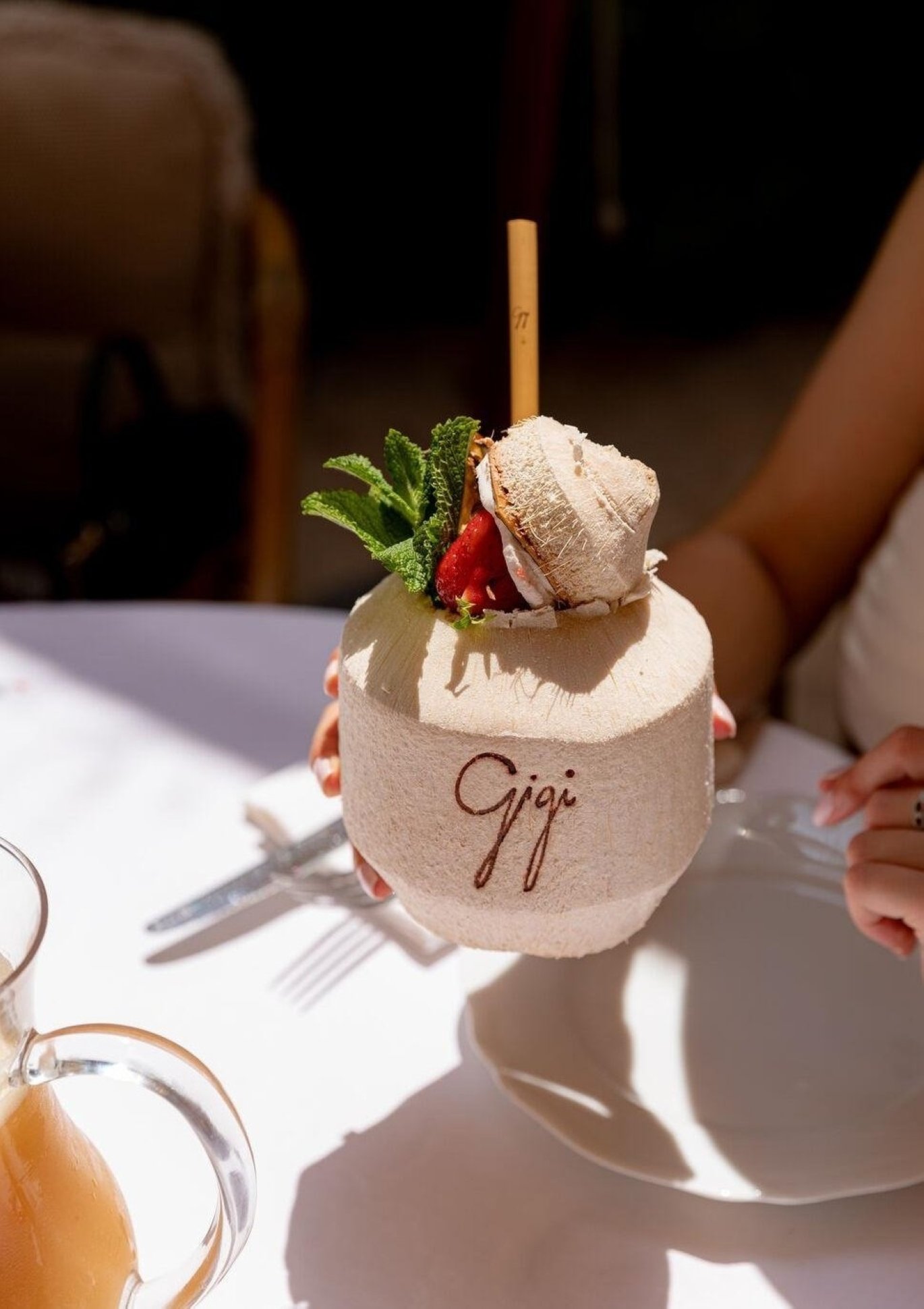
BRAVA by Stefano Ciotti
Michelin-starred Italian chef Stefano Ciotti infuses traditional Italian cuisine with local Turkish ingredients and stories. BRAVA is more than a culinary fusion, it’s a love letter to both coasts, best enjoyed under a starlit sky.

When art takes the stage
If you’re wondering what art has to do with your summer in Bodrum, everything. This summer, Bodrum isn’t just feeding your body. It’s feeding your curiosity.
Efkan & Oemer at Bodrum Edition
During the summer season, starting May 16, Massoumi Gallery takes on the role of seasonal curator for The Bodrum Edition Hotel in Türkiye, transforming the iconic property into a curated destination for contemporary art. With support from Massoumi Gallery, the hotel transforms into a walkable gallery, featuring typographic interventions by Hamburg-based artist duo Efkan & Oemer. Their work blurs the line between street and fine art, offering guests an immersive encounter at every turn. It’s a bold move and a beautiful one.

After dinner?
What’s a summer without rhythm?
Kiff Bodrum
Famous in Istanbul for its lively nights and inventive cocktails, Kiff has landed in Bodrum in collaboration with The EDITION. It’s where music meets mixology and social scenes come alive.
Scorpios Bodrum
A sanctuary for the soul and the senses. With immersive events, spiritual beats, and an artistic crowd, Scorpios isn’t just a venue, it’s a philosophy. This June, don’t miss Melody Sanderson on June 16 – for a sonic journey shaped by spirituality and sound.
Lifestyle
More than just a capital: How Ankara’s libraries rewrote my journey
I landed in Ankara with a plan: gather research material for my Ph.D. and return. Like most scholarly trips, I had mapped out a schedule centered around archival searches, mainly at the National Library of Türkiye and the newly built The Nation’s Library of the Presidency.
What I hadn’t anticipated was how the absence of what I was looking for would redirect my journey, turning a narrowly focused research visit into a broader intellectual and emotional encounter with the city.
For a capital, Ankara doesn’t shout. It doesn’t blaze with the chaotic charm of Istanbul or the cinematic drama of other world capitals. But it speaks softly, with purpose. And in those quiet corners of its libraries, I found a different kind of richness.
The archival materials I had hoped to find weren’t there. Initially, it felt like a setback. But rather than pack my bags early, I stayed. I decided to explore what Ankara’s libraries had to offer beyond my research checklist. What I discovered reshaped how I see academic work, public space and even the meaning of a capital city.
I was staying near Kızılay – the bustling heart of Ankara. Friends from Istanbul had once warned me that Ankara would feel “boring” and “lonely.” But cities are experienced through the lens of intent, and mine had begun to shift. Instead of frustration, I found a rhythm in Ankara – steady, welcoming, reflective. It was, in fact, the perfect place for thinking, writing and observing.
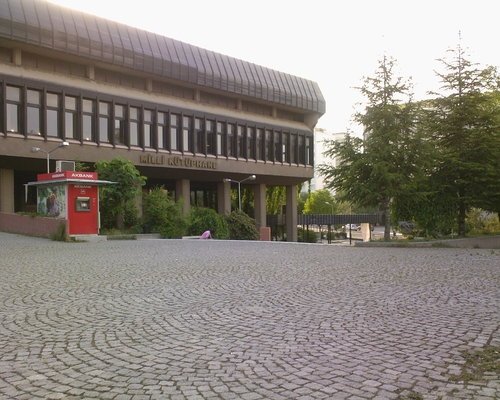
My first stop was the National Library. As I stepped inside, it felt as though I had been transported back in time. The reading halls were named after some of Türkiye’s most celebrated intellectuals and leaders. There was a reverent stillness in the air, the kind that invites contemplation.
The archives, while not exactly aligned with my research needs, offered a glimpse into Türkiye’s historical and literary soul. The building itself carried an aura similar to Istanbul’s older libraries, though with a calm more typical of Ankara’s personality. Still, I sensed that this was only the beginning.
It was at the Presidential Library that everything changed.
To call it grand would be an understatement. From the scale of its architecture to the depth of its holdings, the place is a declaration of Türkiye’s intellectual ambition. The reading rooms feel like cathedrals of learning. The design fuses Ottoman aesthetics with modern sensibilities. But what struck me most wasn’t just the visual grandeur – it was the spirit.
This was not a library built for show. It was made for people.
With capacity for over 5,000 visitors, the library is accessible to all. Thoughtfully designed spaces exist for everyone – from children in the Nasreddin Hoca Library to students buried deep in academic work.
Every detail, from disability access to quiet corners, signals inclusion and foresight. There’s even a quiet mosque within the premises, encouraging both reflection and repose.
One of the most heartwarming features is the free soup and bread served twice daily, as well as complimentary tea, coffee and drinking water throughout the day. These may seem small, but they create a sense of care, dignity and community that few public institutions manage to achieve.
As a foreigner, I expected to blend into the background. Instead, I found myself welcomed at every step. A dedicated shuttle bus, operating hourly from hubs like AŞTI, made travel easy. Security checks were smooth and respectful.
Even the staff – especially the guards – left a quiet impression. Polite, professional and composed, they contributed to the sense that this was not just a building, but a vision.
Two temporary exhibitions on display during my visit – one on the Anatolian Seljuks and the other on the Kaaba – were excellent examples of how cultural memory is kept alive. The curation blended history and modern multimedia, making for an experience both scholarly and emotional.
Leaving the National Library was genuinely difficult. I had only a few days left, and every hour felt precious. I promised myself I would return – this time not just as a researcher but as a reader, a learner and an admirer.
City of quiet dedication
Before discovering the National Library, I had already visited several other libraries across Ankara. Each offered something unique.
At the Adnan Ötüken Provincial Public Library, the sheer demand for seats – students queuing patiently – spoke volumes about the city’s thirst for learning. Watching high schoolers wait hours just to study stirred memories of my own academic journey.
Altın Mekan Kütüphanesi, nestled in Millet Bahçesi, stood out for its open architecture and nature-embracing design. Group discussions and quiet reading could coexist here, reflecting Ankara’s careful blend of tradition and modernity. The helpfulness of the staff only deepened my appreciation.
I even discovered the Öğrenci Çalışma Istasyonu (Student Study Station) near Maltepe Station – a small but brilliant idea executed well. Run by the city’s municipality, this student workstation opposite Ankara Gar felt like a fusion between a cafe and a library. It seats around 40 students, offers free tea and coffee, and provides a peaceful setting for those studying on the go.
Ankara does not dazzle in the way global capitals are expected to. But it doesn’t try to. Instead, it radiates a quiet dignity. It is a city built for its citizens – for students, scholars and anyone who values time, space and the pursuit of knowledge.
What I found in Ankara wasn’t just inspiration for my Ph.D. I found a deeper understanding of what public institutions can mean, how a capital city can serve its people without spectacle, and how libraries – those often overlooked civic spaces –can become symbols of a nation’s soul.
In the end, I didn’t come away with the documents I had planned to collect. But I left with something far more lasting: a renewed sense of purpose, a heartfelt respect for Ankara and a desire to return, not just for research, but for the sheer joy of learning in a city that quietly nurtures it.
Lifestyle
Rijeka: Croatia’s coastal gem, rich in history, hidden wonders
Rijeka, meaning “river” in Croatian, is a captivating port city on the Adriatic coast, inviting you on a journey through time with its rich history and multicultural tapestry. As Croatia’s third-largest city and home to its most significant port, Rijeka has been a coveted prize throughout history, bearing the marks of various communities, including Italian, Hungarian and Croatian cultures and even experiencing Ottoman incursions.
Today, Rijeka is the largest port in the Kvarner Bay, an inlet of the Adriatic Sea, just two hours from Croatia’s capital, Zagreb. With its historical significance, stunning architecture and strategic location, Rijeka promises an unforgettable experience for anyone visiting Croatia.
Architectural marvels
Capuchin Church of Our Lady of Lourdes: Upon entering the city, you’ll be greeted by the neo-Gothic Capuchin Church, built in the early 1900s. Legend has it that the upper floor of the church remained unfinished due to financial difficulties. Funds were later collected in the name of a supposed saint, allowing for its completion. However, the truth was eventually revealed, leading to the “saint’s” prosecution for fraud.
Saint Vitus Cathedral: Construction of the Rijeka Cathedral, also known as Saint Vitus Cathedral, began in 1638 in the heart of old Rijeka. Taking over a century to complete, it was finally finished in 1744. This cathedral holds a dramatic history, including a cannonball embedded in its wall that ties into a local legend. During the Napoleonic Wars, a Croatian girl named Karolina bravely implored British soldiers to cease fire during an attack. Her beauty so moved the British officers that they halted their assault, saving many lives. You’ll find Karolina’s name echoed throughout the city, a testament to this heroic tale. Housing numerous Baroque artworks, the cathedral is truly at the heart of the city.
Church of St. Nicholas: As you turn toward the port, you’ll encounter an Orthodox church that embodies Balkan resilience. In stark contrast to the city’s opulent buildings, the simple St. Nicholas Serbian Orthodox Church has an intriguing story. Serbs, who once constituted a significant portion of the city’s population, persistently demanded a church. Exasperated by their insistence, the governor reportedly threw a stone into the sea and challenged them, “Go on, build your church here!” Embodying the notorious Balkan stubbornness, the Serbs filled the coastline and built their church precisely on that spot.
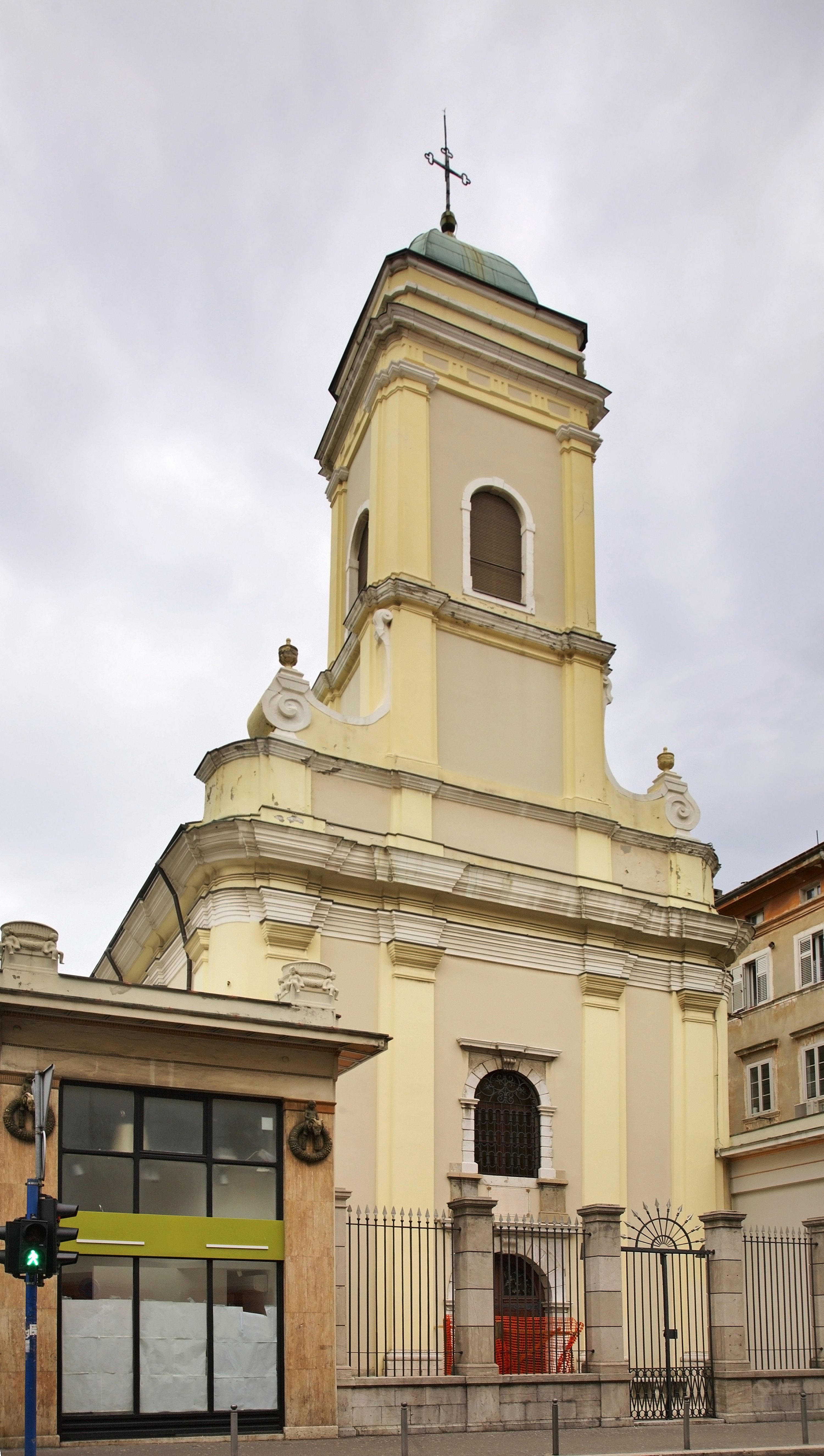
Gradski Toranj (City Tower): Walking along Rijeka’s famous Korzo Street, you’ll come across this yellow clock tower, a prominent symbol of the city. Uniquely positioned amid other buildings, it is a gateway to Ivan Kobler Square. This tower, a passage to ancient Roman ruins, is truly worth seeing and photographing.
Cultural hubs
Computer Museum Peek & Poke: Computer Museum Peek & Poke boasts a fascinating two-story computer museum that promises an unforgettable experience. Here, you’ll find a collection of historic computers, printers and gaming consoles. It’s a particularly engaging stop for families with children, offering insights into the evolution of technology.
Historic National Theater: Beyond its identity as a port city, Rijeka emerges as a significant historical and cultural center of Croatia. The historic theater building, home to exciting shows and stage performances, is arguably one of the city’s most architecturally stunning and must-see structures. You might even catch a magnificent performance during your visit. The Croatian National Theatre Building, built in a magnificent Baroque style by Austrian architects Fellner and Helmer, opened in 1885 and was notably one of the first places in Europe to use electric light bulbs.
Urban exploration
Korzo Street, the bustling main shopping street and the beating heart of Rijeka, is also home to wonderful cafes and restaurants offering delightful culinary experiences. Strolling along this historic cobblestone street, you’ll soak in the vibrant atmosphere of the city.
Rijeka’s Ornate Buildings: The ornate and colorful buildings, showcasing the Balkans’ love for grandeur, certainly deserve a spot on the list of famous landmarks. The Ploech Building, adorned with intricate sculptures and the Modello Palace (Palača Modello), an architectural masterpiece by Austrian architects located across from Kazalisni Park, are just a couple of the magnificent structures perfect for a photo opportunity.
Looking up from the confluence of the canal and the river, you’ll spot Trsat Castle perched on a hill, another worthy addition to your itinerary. Inside the castle, you can enjoy your time exploring St. Mary’s Church with its important icons, the Franciscan Monastery, various parks, restaurants and cafes, an exhibition hall and sports fields.
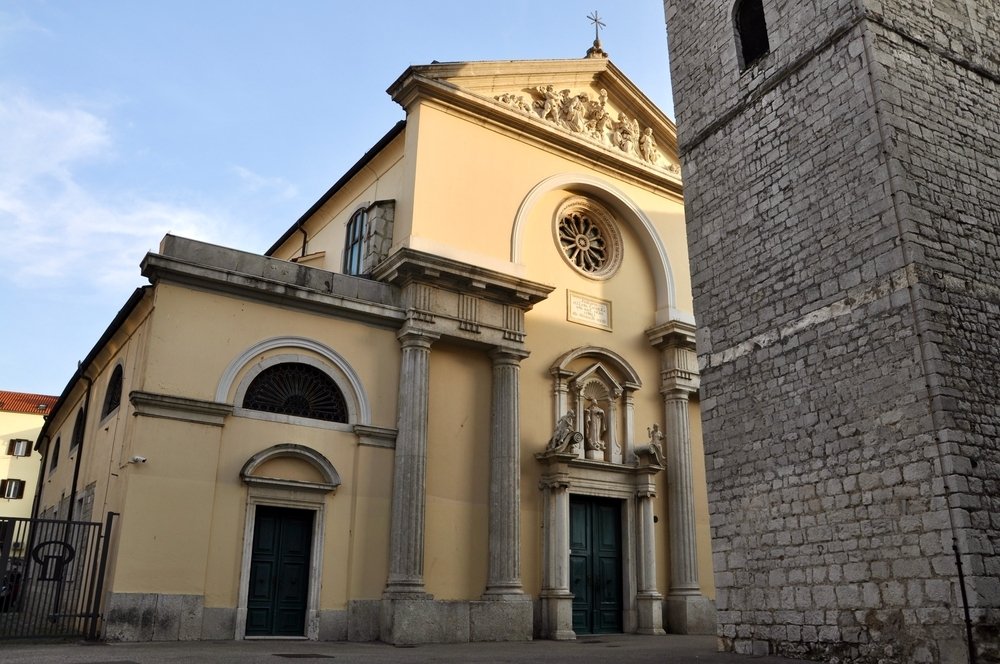
Walking along the canal will lead you to the square where the Church of the Assumption of the Blessed Virgin Mary and the Leaning Tower are located, allowing you to trace Rijeka’s historical footprints.
Rijeka’s beaches
Don’t forget that Rijeka offers numerous beaches close by where you can enjoy the summer sun.
Kantrida beach: Located about 3 kilometers (1.86 miles) southwest of the city center.
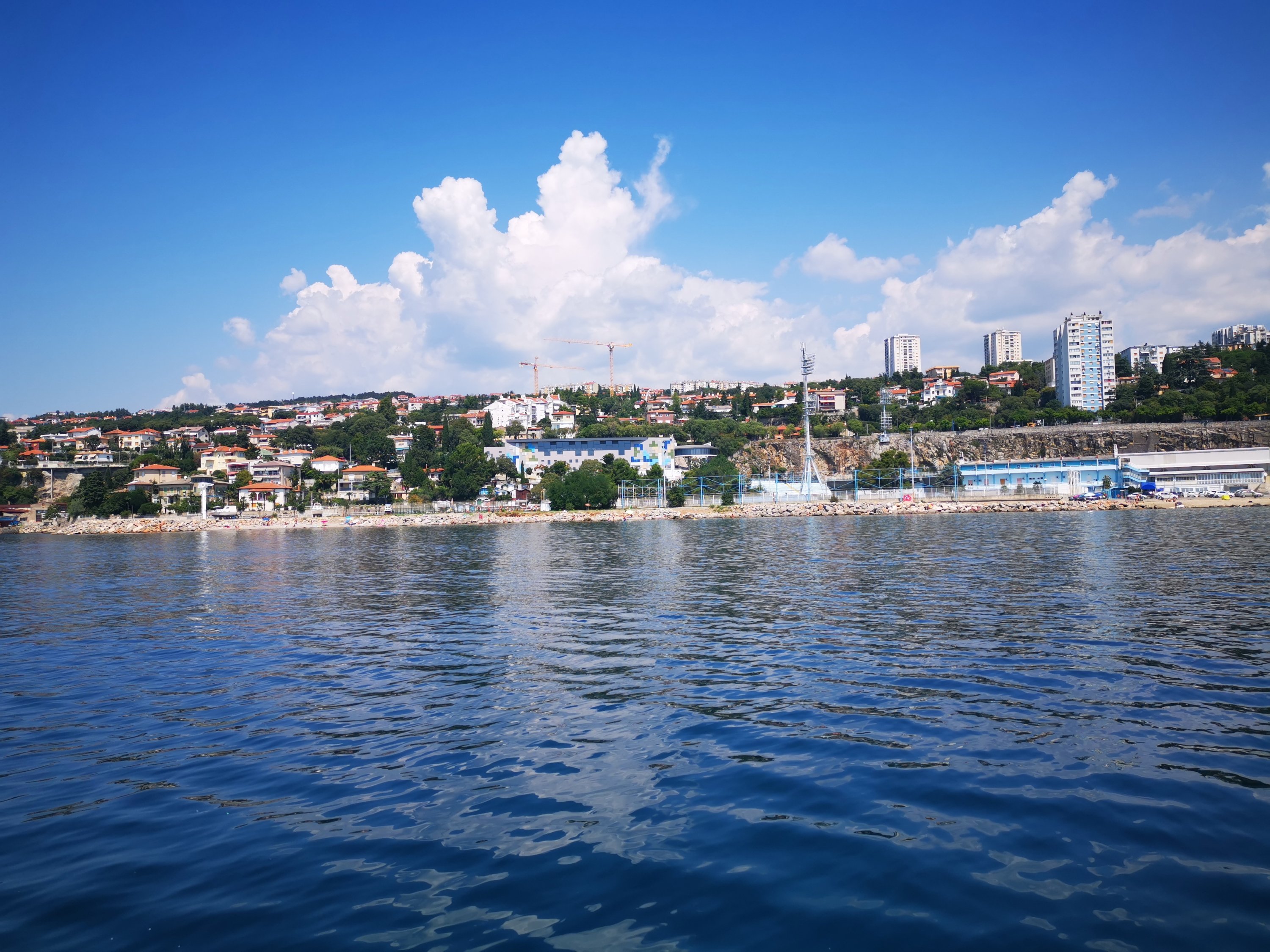
Sablicevo beach: Situated in Kvarner Bay, it is known for its fine pebbles and clean water.
Javna beach: While not ideal for families with children due to its high and steep rocky cliffs, it offers breathtaking sunsets.
Kostrena beach: Located northwest of Rijeka, it has been awarded the prestigious “Blue Flag” for its quality.
Ploce beach: A popular choice for families with children.
These are just a few excellent beaches where you can bask in the Adriatic’s refreshing waters.
In Rijeka, with every step, you’ll touch a different era and around every corner, you’ll encounter another culture. Start your mornings on Korzo Street with the aroma of fresh coffee, and in the evenings, listen to the whispers of the past as the sun sets in fiery hues by the sea.
Lifestyle
Türkiye’s Kızılin Canyon: Adventure, history, breathtaking views await
Located on the banks of the Euphrates River in the Besni district of Türkiye’s Adıyaman, Kızılin Canyon draws attention with its rock tombs and a history dating back 5,000 years. Thanks to recent infrastructure improvements, it has become a popular destination for both domestic and international tourists.
Spanning approximately 200 hectares and containing nearly 300 caves of various sizes, Kızılin Canyon is situated about 45 kilometers (28 miles) from the district center. The area holds significant potential for both cultural and nature tourism.
Over the past three years, comprehensive infrastructure works have opened Kızılin Canyon to tourism. Visitors can enjoy unique landscapes on boat tours along the Euphrates River while embarking on a cultural journey through millennia-old caves.
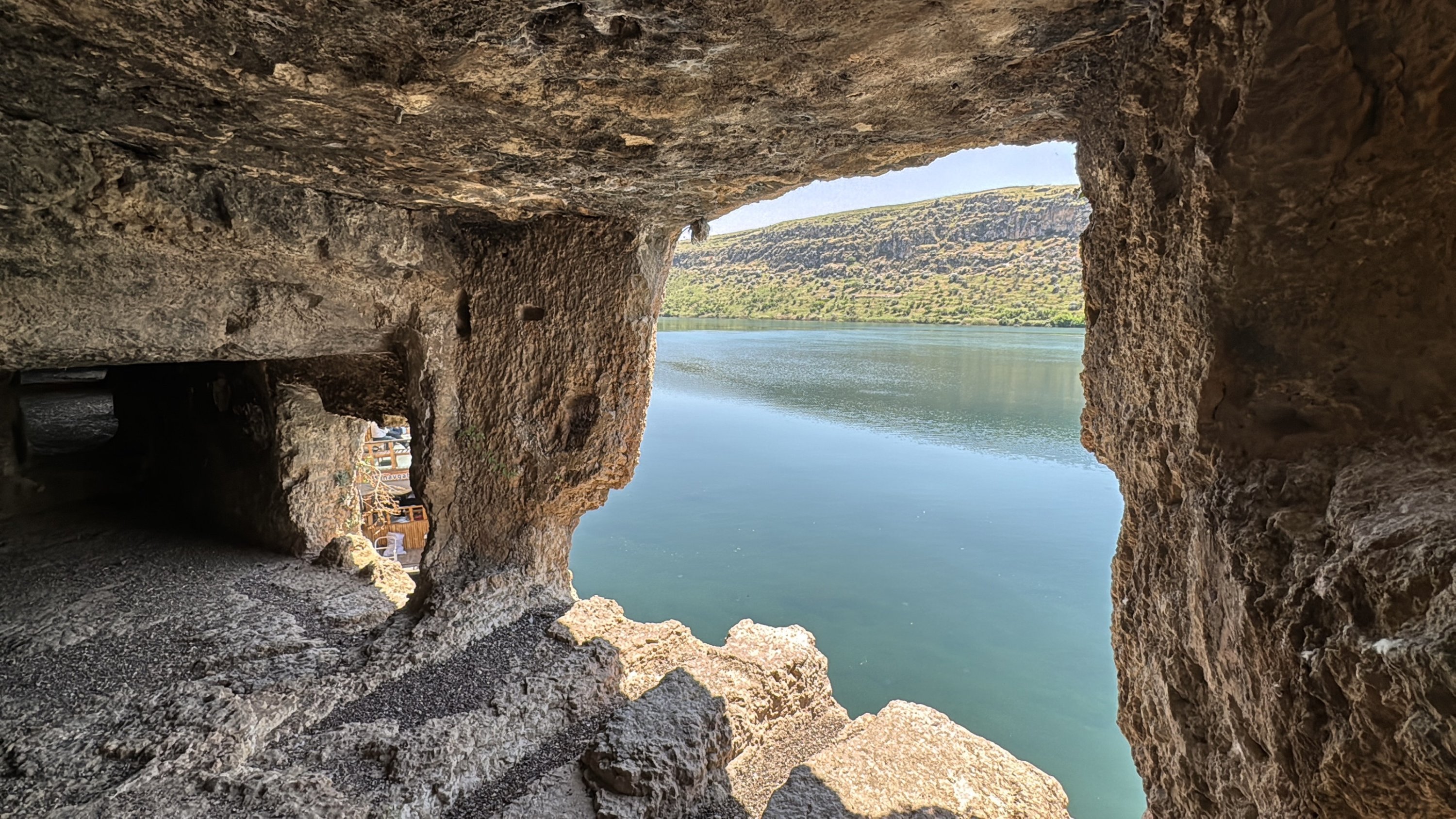
Besni District Governor Çağlar Partal told Anadolu Agency (AA) that the canyon has become an important tourism investment for the region. He highlighted ongoing projects involving environmental landscaping, walking paths, viewing terraces and rest areas.
“This place, along with Göksu Canyon, is truly enchanting,” Partal said. “Its history dates back nearly 5,000 years. We first set up docking facilities and ensured safety for boat tours. We also established camping and picnic areas. With sponsorship support and contributions from the Adıyaman Governorship, Provincial Administration and our District Governorate, we’ve come this far. Last year, we welcomed 50,000 visitors and this year we expect between 100,000 and 120,000.”
Partal emphasized that visitors experience not only natural beauty but also historical heritage: “Boat tours take visitors to the cave areas. We have opened caves deemed safe for visiting. At the same time, we continue to expand the project with environmental arrangements and a sustainable tourism approach.”
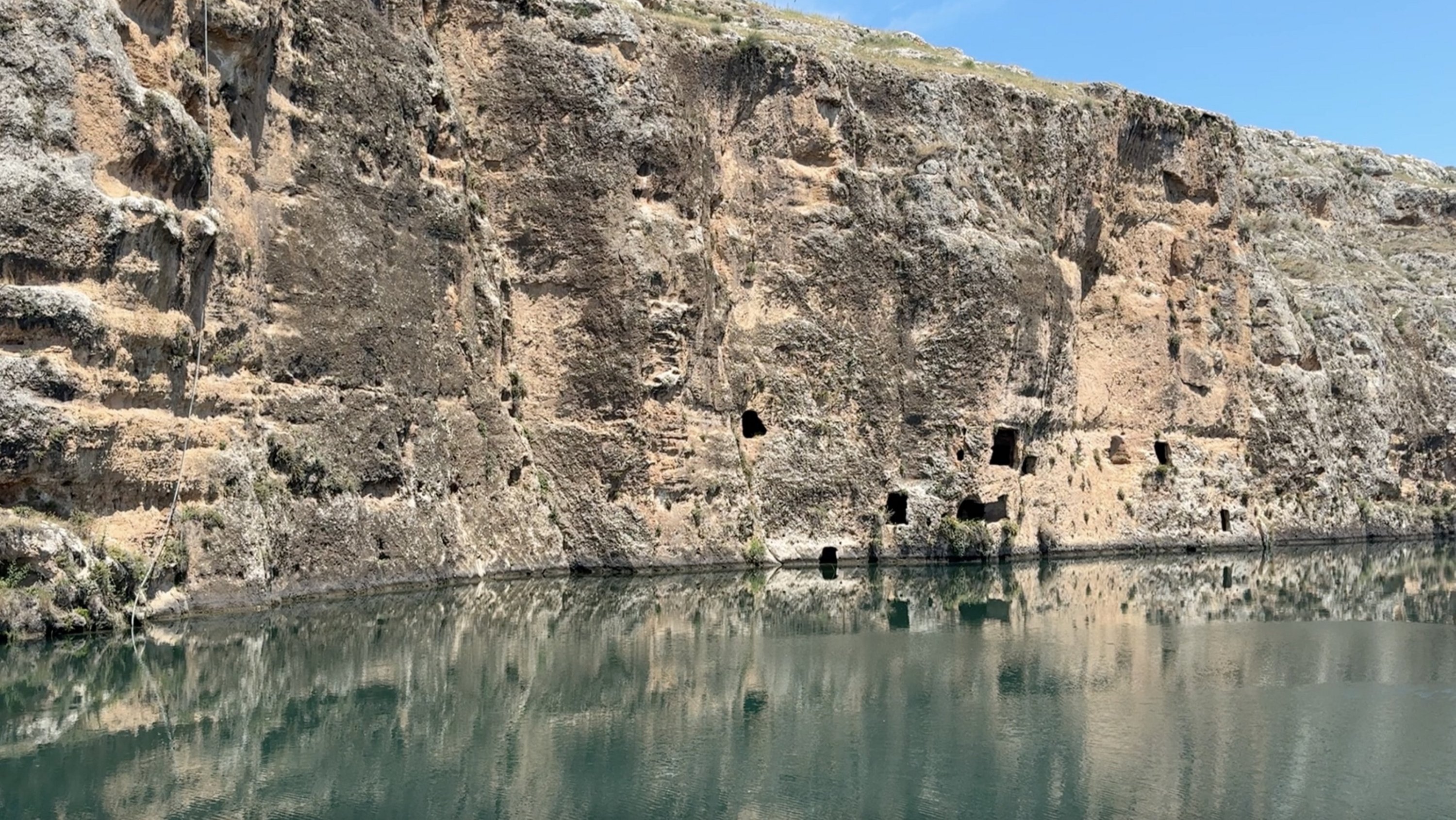
Archaeological significance
Mehmet Alkan, director of the Adıyaman Museum, pointed out the canyon’s archaeological importance. Interest in the area has been increasing day by day, he said.
“The canyon covers about 200 hectares and we have identified nearly 300 caves,” Alkan noted. “Some were used as tombs during the Roman period, but settlement traces in the caves date back to the third millennium B.C. This makes the canyon not just a natural area but also an open-air archaeological park.”
Alkan explained that the caves include both single and multistory structures. “Visitors here can explore the natural beauty along the Euphrates River while embarking on a cultural journey. This region is one of the rare places offering both cultural and nature tourism,” he added.
Lifestyle
Rovinj: Charming Adriatic town perfect for relaxed seaside getaway
Though Rovinj may appear tiny on the map, once you step inside, it unfolds into a rich and legendary coastal town. The scent of salt deeply absorbed into its stone walls blends with centuries of history, making Rovinj an enchanting destination – especially for those dreaming of a fairy-tale seaside getaway this summer.
Exploring Adriatic
The Adriatic coast begins with Piran, Slovenia’s hidden paradise, and stretches southward to reveal countless hidden gems across different countries. This route offers so many treasures that it could easily fill your entire summer itinerary.
One of these gems is Rovinj, located at the opposite end of the Istria Peninsula from Piran. This time, however, the country is Croatia. Just half an hour south of Piran, you’ll cross into Croatian territory – a fascinating border region where it’s possible to fall asleep in one country and wake up in another within a single day.
Croatia’s Adriatic treasure
The Istria Peninsula, which includes Piran, is also home to Rovinj, one of Croatia’s secret paradises. Historically ruled by the Venetians, this peninsula still carries the breeze of Italy. Just like in Piran, Rovinj exudes a strong Italian charm.
In my opinion, Rovinj is a destination worth visiting in every season. The entire Adriatic coastline, from north to south, can be enjoyed not only in the summer but also during the quieter, more peaceful autumn and spring months. These seasons often bring a more relaxed atmosphere – perfect for exploring both the lively maritime tourism and the rich historical fabric of the region.
Unlike the famous Dalmatian coastlines that include cities like Dubrovnik and attract huge crowds, Rovinj remains less crowded. This means you can enjoy a more tranquil, pleasant vacation here.
What to do in Rovinj
Wander narrow streets
One of the best ways to experience Rovinj is by wandering through its maze of narrow streets. If you visit during the summer, you can end your stroll by plunging into the pristine Adriatic waters. Indulge in abundant seafood and breathe in the iodine-rich sea air.
Rovinj harbor
Rovinj’s harbor is a narrow inlet opening to the Adriatic Sea, home to small fishing boats, yachts and charming vessels. The colorful boats and the historic town rising behind them create a picture-perfect, romantic scene – ideal for photography and soaking in Rovinj’s unique spirit.
Looking up from the harbor toward the old town, the colorful houses and the bell tower of the Church of St. Euphemia might remind many of Italy’s Cinque Terre or Amalfi Coast. While I haven’t visited those places yet, Rovinj definitely has its own distinct soul.

Streets of Old Town
Getting lost in the Old Town’s narrow alleys is one of Rovinj’s most delightful experiences. Wander, snap photos, shop for souvenirs and take a break with a coffee at Tito Square (Trg Marsala Tita), located right by the harbor.
Church of St. Euphemia
For one of the best views in Rovinj, climb the bell tower of the Church of St. Euphemia. Be prepared for a bit of a workout – there are 200 steps to reach the top – but the breathtaking panoramic views make it absolutely worth it.
Plaza Balota
Plaza Balota is a lovely spot to enjoy the sea, featuring stairs and walkways ideal for taking a restful break. The crystal-clear waters here can get crowded later in the day, so I recommend visiting at sunrise for a peaceful experience.
If you have time, you can also visit Zlatni Rt (Golden Cape) or Valdaliso Beach, both just a short drive from the old town.
Balbi’s Arch
If you’re unsure where to start exploring Rovinj, begin at Balbi’s Arch, the gateway to the Old Town (Stari Grad). This beautiful, intricately carved stone archway will captivate your eyes and heart. Beyond it lies Grisia Street, lined with picturesque houses, cafes and restaurants.
Farmer’s Market
Recharge with fresh and healthy foods at Rovinj’s Farmer’s Market. Sample fresh fruits and vegetables, and don’t miss the chance to taste local truffles – an Istrian specialty.
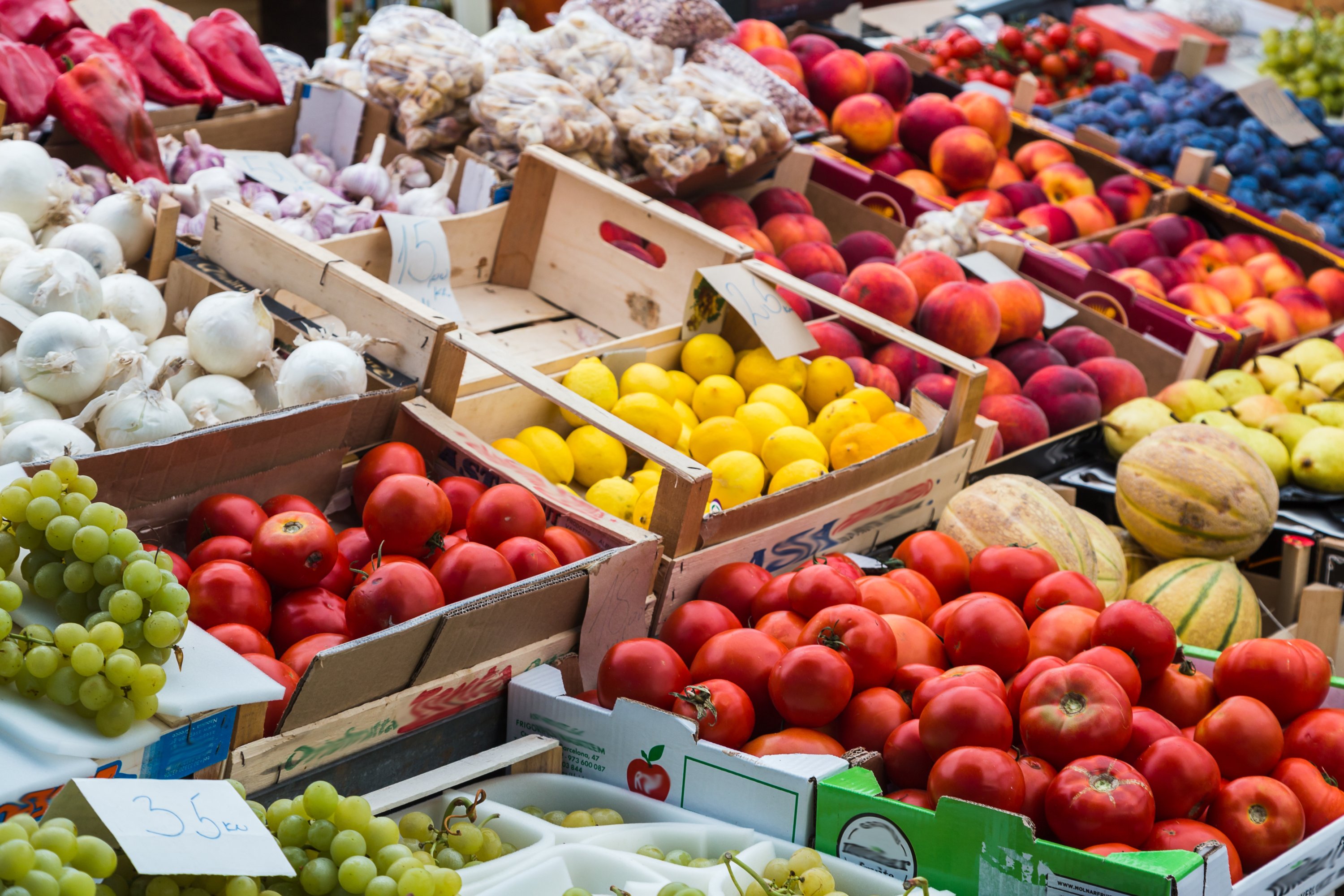
Brief rest at Mediterraneo
Enjoy a scenic break with views of St. Catherine Island at Mediterraneo, a cozy spot right by the water. Its colorful tables and comfy chairs offer a perfect place to relax. If you wish, you can take a delightful boat trip to nearby St. Catherine Island and Kızıl Island from here.
Final tips
Parking in the narrow streets can be challenging. Use nearby parking lots like Velika Valdibora and Mala Valdibora.
Rovinj offers a fantastic mix of Mediterranean, Italian and Balkan cuisines. Don’t miss tasting the region’s famous truffles.
Even without a fixed plan or itinerary, Rovinj guarantees a wonderful travel experience.
From Rovinj, you can continue southward to Pula and explore other stunning coastal towns of Croatia.
Lifestyle
‘Chelsea in Bloom’: When flowers, fashion collide in London’s chicest spot
There’s something utterly magical about Chelsea in late May. The air feels sweeter, the pavements brighter and every corner seems to whisper, “Stop and smell the roses.” That’s because it’s “Chelsea in Bloom” – one of London’s most charming and glamorous floral festivals and a hidden gem even many locals don’t fully appreciate. The event transforms the neighborhood into a vibrant, living gallery where nature and artistry blend seamlessly, inviting everyone to pause and indulge their senses.
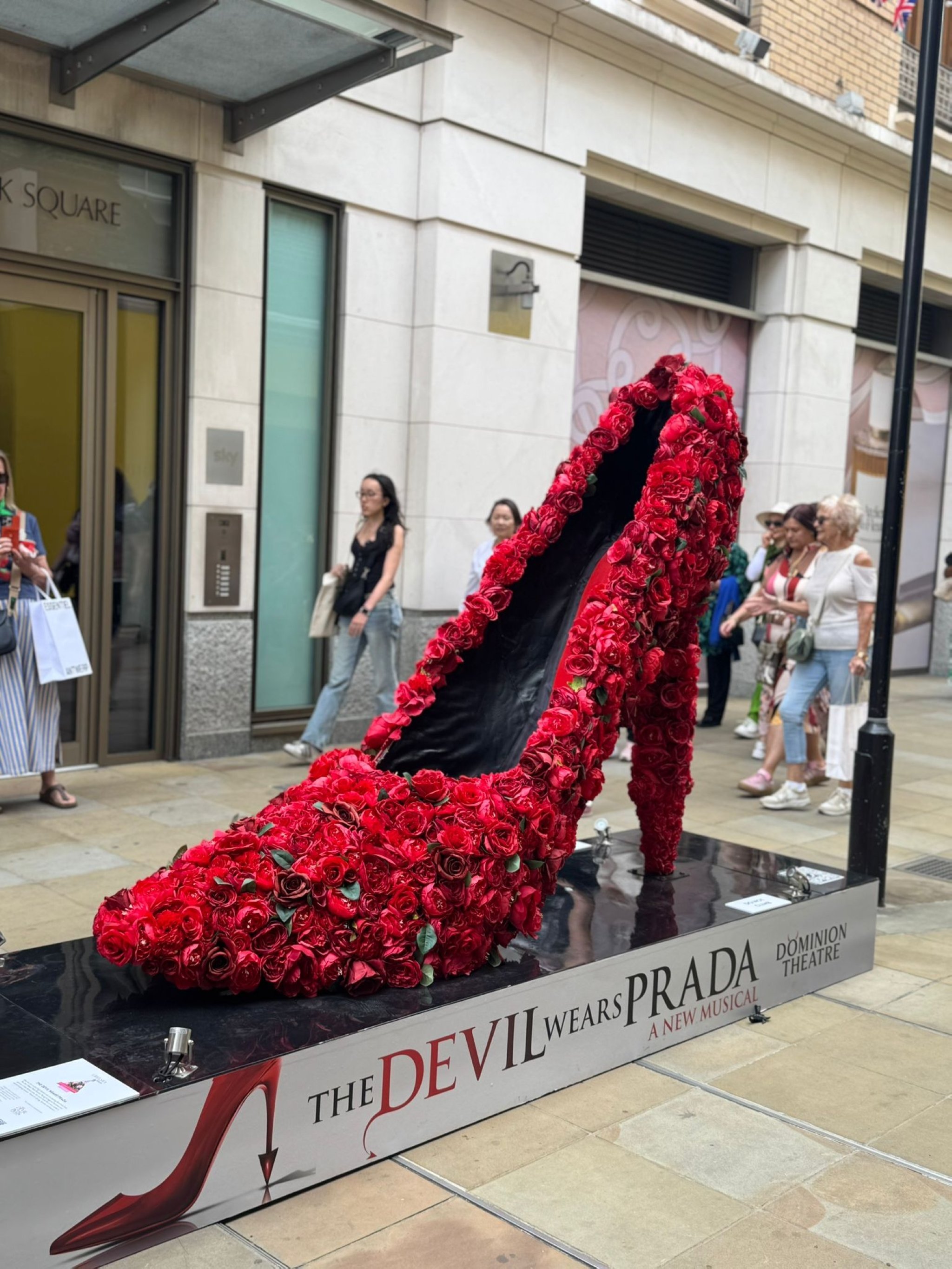
There are some moments in London where the city feels as joyful and effortlessly stylish as it does during Chelsea in Bloom. I’ve always loved how Chelsea brings together elegance and creativity, but this May, the neighborhood felt like a living fashion editorial, and I found myself smiling at every corner. From Sloane Street to Duke of York Square, shopfronts transform into floral dreamscapes, each telling a unique story through blooms and design. The atmosphere hums with a special kind of energy, as if the flowers themselves are celebrating alongside the visitors.
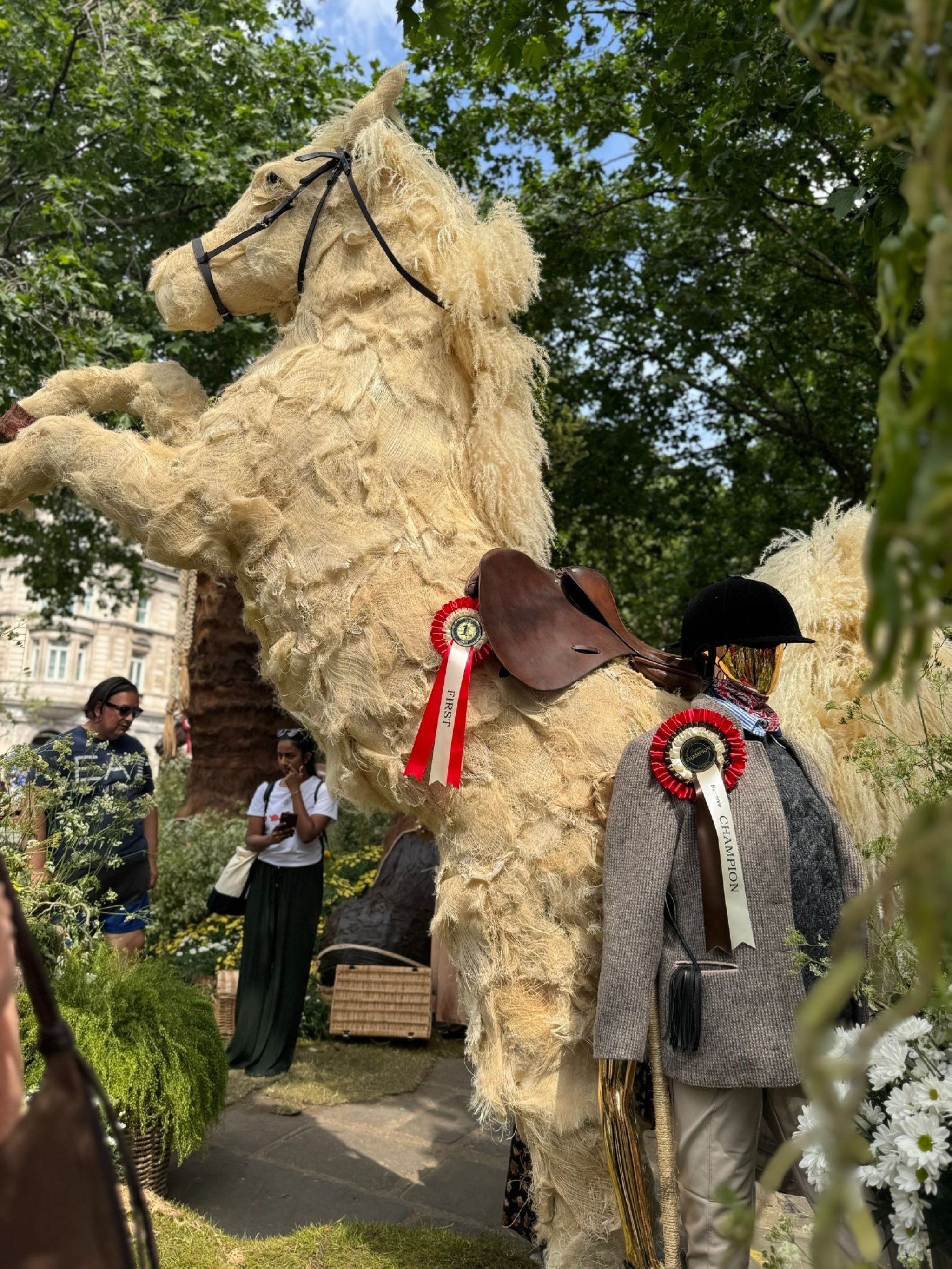
Celebrating its 20th year, this year’s theme was “Flower in Fashion” – and what a perfect pairing. Over 130 shops, restaurants, and hotels turned their façades into whimsical floral installations, each one more imaginative than the last. Think: a high-heeled shoe covered in roses, a punk-inspired mohawk made entirely of flowers and shop windows that looked like they belonged on a couture runway. The level of detail was breathtaking, blending floral artistry with fashion’s boldness and flair, creating a sensory experience that dazzled at every turn.

For anyone in fashion, it’s impossible not to feel inspired. Chelsea has long been one of London’s most iconic fashion neighborhoods, known for its chic boutiques and cutting-edge style. The details, color harmony and storytelling of “Chelsea in Bloom” mirror what we strive to achieve in our collections. In fact, “Chelsea in Bloom” is a reminder that fashion doesn’t live only on runways. It blooms in the streets, in pop-up installations and in the joy people feel when they dress up to take it all in. This festival blurs the boundaries between fashion and floral art, turning everyday spaces into canvases of creative expression.
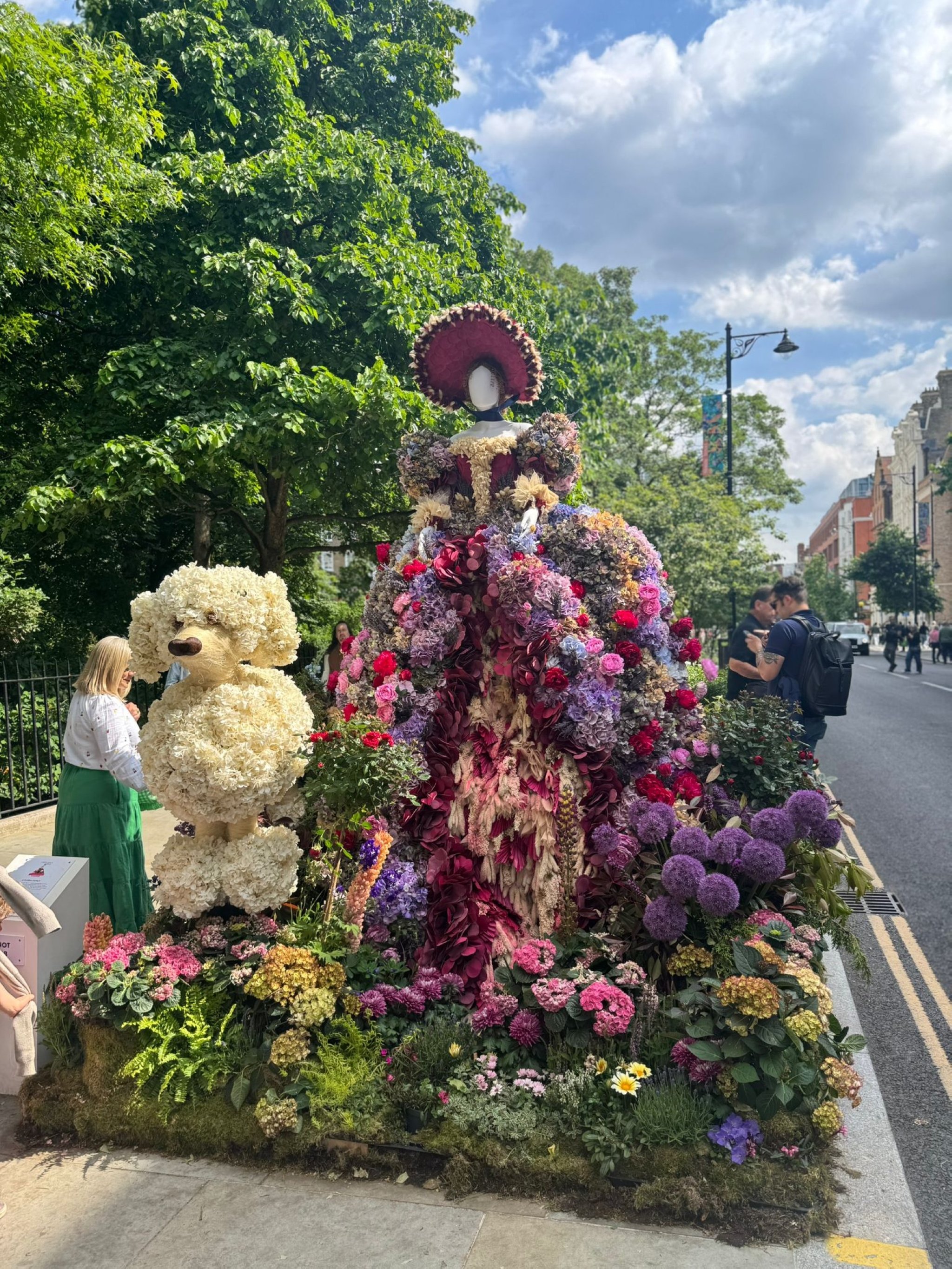
One display that caught my eye was at Peter Jones, where a hand-dyed Japanese lotus (using raspberries and onion skins, no less!) told a beautiful story of heritage and sustainability. This innovative use of natural dyes linked tradition with modern eco-consciousness, adding layers of meaning to the floral arrangement. I also loved how brands like AllSaints and RIXO played along – releasing limited-edition pieces and inviting people inside for styling tips, giveaways and sparkling refreshments. These activations made the festival feel inclusive and interactive, turning casual shoppers into participants in a shared celebration of style and nature.
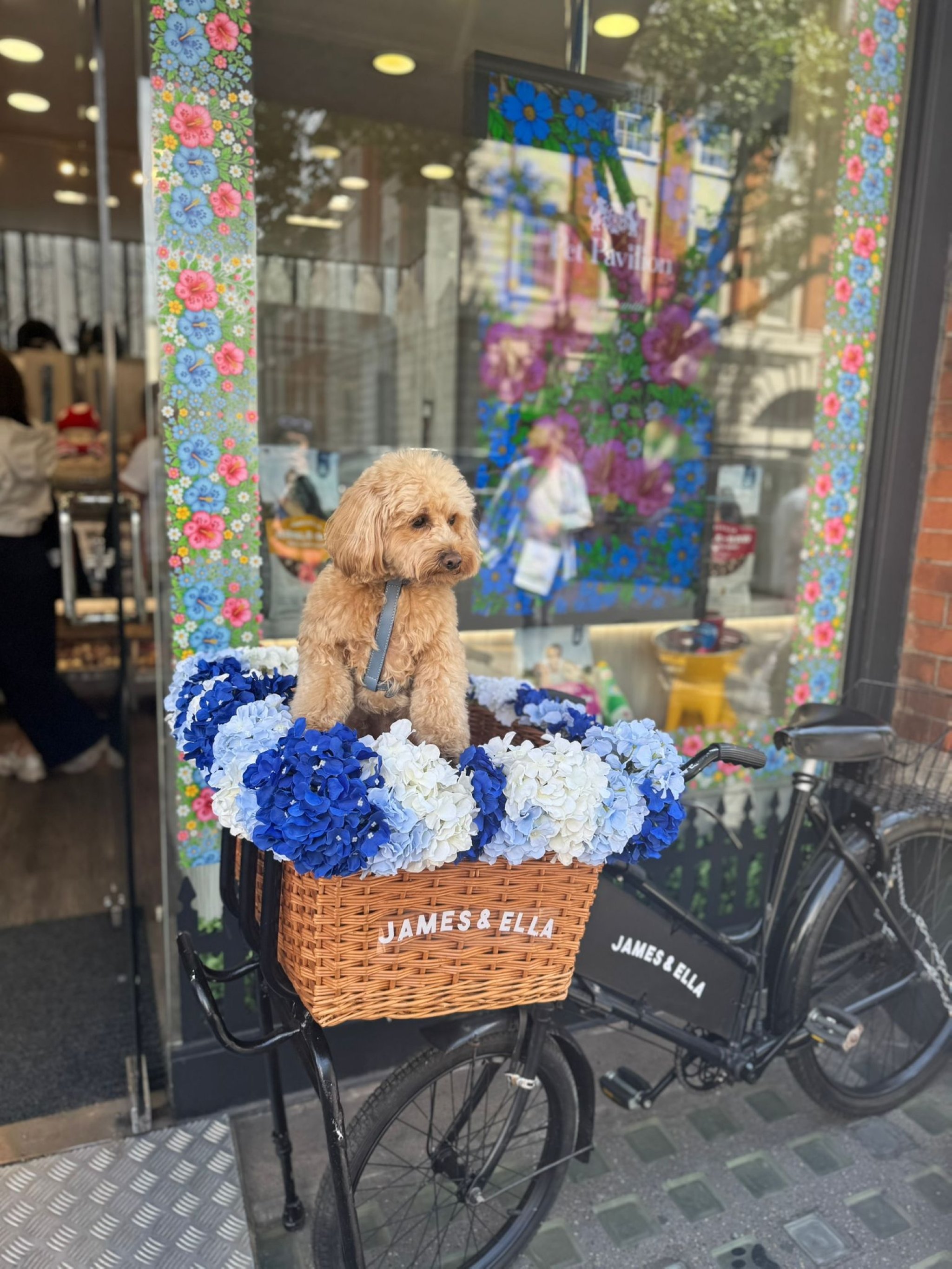
What I adore most about this event is its accessibility. You don’t need a ticket, a connection, or even much time – just curiosity and a camera. You will see toddlers pointing at giant daisies, couples sipping rosé under petal-filled arches, and fashionistas matching their dresses to the displays. It’s an experience for everyone, a beautiful moment of community and creativity that welcomes all ages and interests. The smiles and spontaneous photo ops everywhere remind you that the festival is not just about flowers or fashion but shared joy and the simple pleasure of beauty.

If you haven’t yet wandered through Chelsea in Bloom, let this be your sign to go next year. Take a walk, breathe in the scent of fresh roses and let the style of the city wrap around you like the perfect spring dress. It’s a fleeting moment where the ordinary becomes extraordinary, and the streets themselves seem to blossom with life and possibility. Chelsea in Bloom is more than a festival – it celebrates creativity, elegance and the timeless allure of flowers.
-

 Politics3 days ago
Politics3 days agoManisa Mayor Ferdi Zeyrek succumbs to injuries after electric shock
-

 Politics3 days ago
Politics3 days agoTürkiye’s AK Party to tackle field issues in annual camp
-

 Lifestyle2 days ago
Lifestyle2 days agoGastronomy, art in Türkiye’s Bodrum: Where to go this summer?
-

 Refugees3 days ago
Refugees3 days agoTurkey to export 48 of its nationally produced fighter jets to Indonesia
-

 Economy3 days ago
Economy3 days agoUS inflation ticks up slightly to 2.4% in May
-
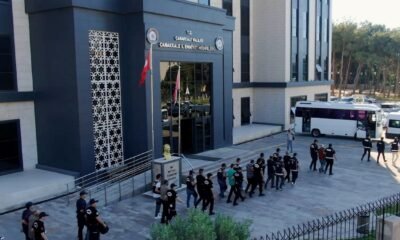
 Politics1 day ago
Politics1 day agoMigration smuggling gang brought down in Çanakkale
-

 Politics2 days ago
Politics2 days agoTürkiye playing ‘very positive role’ in helping unify Syria: US
-

 Daily Agenda2 days ago
Daily Agenda2 days agoCevdet Yılmaz is coming to Gaziantep: will open the industrial and industrial center




